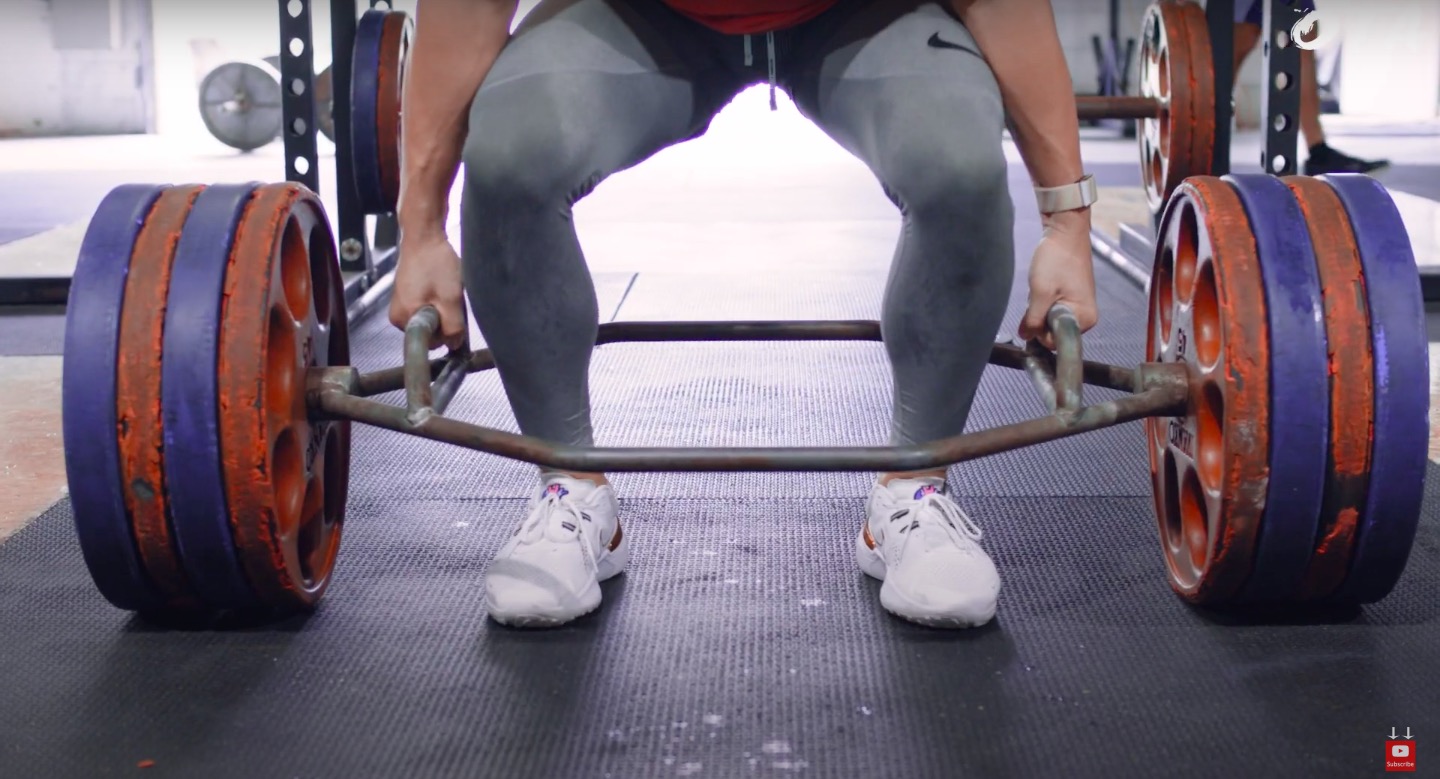Recently I got a question about deadlift variations for athletes from someone in my elite coaching group. I want to address this by going through each of them:
First, it’s important to understand this one thing when it comes to any deadlift variation for athletes or really any movement you hit while training: any exercise, is neither good nor bad.
Rather, I like to think of movements as tools just like you would have in your toolbox… a hammer or a screwdriver aren’t bad, they just have different purposes. It’s your job as the athlete or coach to decide which tool is best suited to get the job done for whatever outcome you’re looking to achieve.
When I look at each deadlift variation I consider few things:
- What stimulus are we looking to apply?
- What skills am I looking to transfer from training to competition?
Before we get into each type of deadlift and why you would use it for different training situations… I’m going to be honest with you and tell you straight up, that my personal favorite variation across the board with all team sport athletes is the trap bar deadlift.
The other two I use as supplemental or secondary work to another compound movement, which will also be dependent upon the particular athlete. Let’s get into it.
Trap Bar Deadlift
The reason I love the trap bar deadlift so much is because of your ability to load and transfer the movement into the context of an actual sport. The athlete is also least compromised in this variation than any other. For example, the conventional deadlift puts more work on the erector spinae muscles because you have to hinge forward more to start…
When performing a trap bar deadlift, the torso can be a bit more upright and we place more emphasis on the quads and across the knee. This makes it actually more a hybrid between your squat and and a deadlift. Athletes can learn and perform this movement a bit easier than the other two, making it great for new or younger athletes.
One more reason I prefer this style is because research has shown you can actually perform higher peak velocity and power while using the trap bar for absolute strength. This translates over to things like sprint speed and vertical height.
Conventional Deadlift
When it comes to conventional deadlift, if I’m looking to build an athlete up or focus on size RDL’s or conventional are great. This form allows you to really focus on building more strength within the intrinsic muscles along the spine to support greater load. Here’s how to do a dumbbell RDL as a great supplemental strength option.
If an athlete is weak in the hamstrings, I also may have them focus more on conventional deadlift to work on specifically strengthening those muscles.
Sumo Deadlift
I love using sumo deadlift particularly with baseball players or any athletes who need to display lateral force. This form helps you to develop just that.
A baseball athlete for example needs to be able to throw and hit using lateral force, so the sumo deadlift helps us build strength here by taking the stance extremely wide (outside the hips) and learning to create torque or spread the floor. Rather than focusing on linear, glute work the sumo stance actually focuses more on the gluteus medius which you need to move laterally with power.
So Which Deadlift Variation For Athletes Do I Use?

Ultimately your programming should reflect whatever point you’re at in the season, and your overall goals for that cycle of training. You have multiple options when it comes to choosing deadlift variations for athletes, so I recommend starting with a solid program to guide you through using each.
Want to learn more about how to program your strength training?
Lucky for your I just released a new course called The Advanced Athletic Strength Course that contains the most-up to date strength training modalities for athletes.
Ready to become a beast on the field and in the weight room?
Just hit the link below to join: